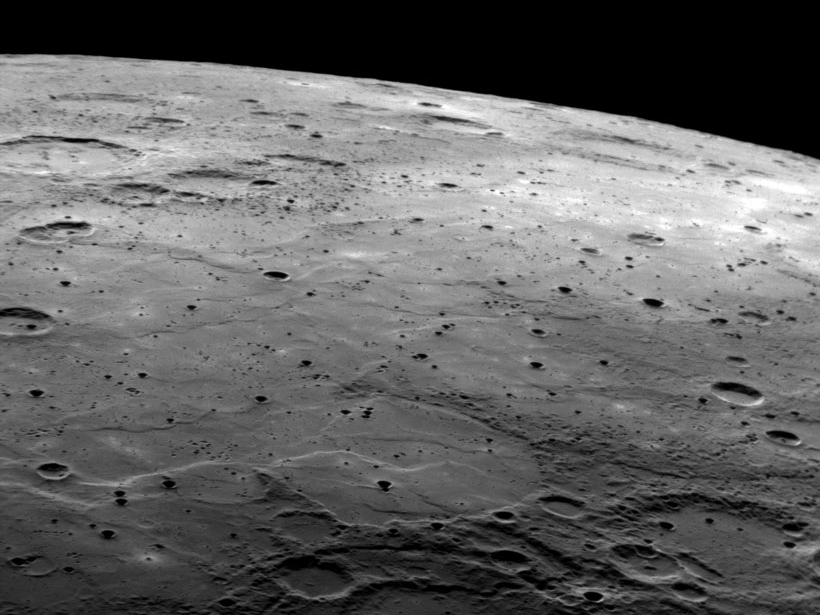Source: Geophysical Research Letters
For the past several billion years, collisions with meteoroids, asteroids, and comets have been the primary process modifying the surfaces of both the Moon and the planet Mercury. Over time, smaller impacts, debris ejected from these impacts, and other processes like thermal expansion and contraction degrade the craters these collisions leave behind and make them shallower. Here Fassett et al. use data from the Mercury Surface, Space Environment, Geochemistry, and Ranging (MESSENGER) mission to quantify the rate at which Mercury’s landscape is evolving and compare the results to the lunar surface.
Using topographic profiles of Mercury generated by two different techniques—direct laser altimetry measurements and high-resolution stereo images—the researchers acquired depth-to-diameter measurements of 204 similarly sized craters on Mercury’s smooth plains. Surprisingly, the results indicate that Mercury’s bowl-shaped craters are substantially shallower than those on the Moon and hence have been more highly modified, despite the fact that the volcanic plains on both bodies are close to the same age. Additional analyses using models that estimate the rate of landform evolution suggest that crater degradation is occurring twice as fast on Mercury as on the Moon.
This substantial difference in degradation rates raises a number of puzzling questions with potentially broad implications, including whether different weathering processes are occurring on the two bodies and if the crater population on the oldest terrains on Mercury might be highly modified by its fast rate of landform evolution. The results of this study should motivate more research on the factors that control the evolution of landscapes on these and possibly other airless bodies. (Geophysical Research Letters, https://doi.org/10.1002/2017GL073769, 2017)
—Terri Cook, Freelance Writer
Citation:
Cook, T. (2017), How quickly is Mercury’s surface evolving?, Eos, 98, https://doi.org/10.1029/2017EO075693. Published on 26 June 2017.
Text © 2017. The authors. CC BY-NC-ND 3.0
Except where otherwise noted, images are subject to copyright. Any reuse without express permission from the copyright owner is prohibited.

